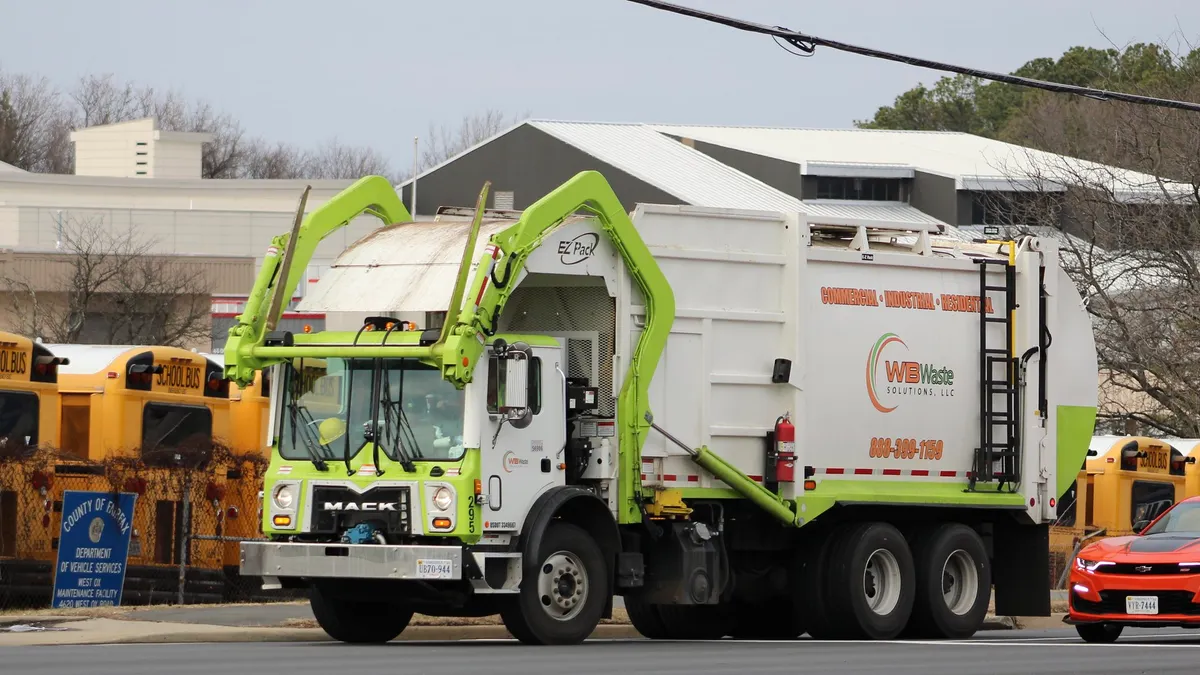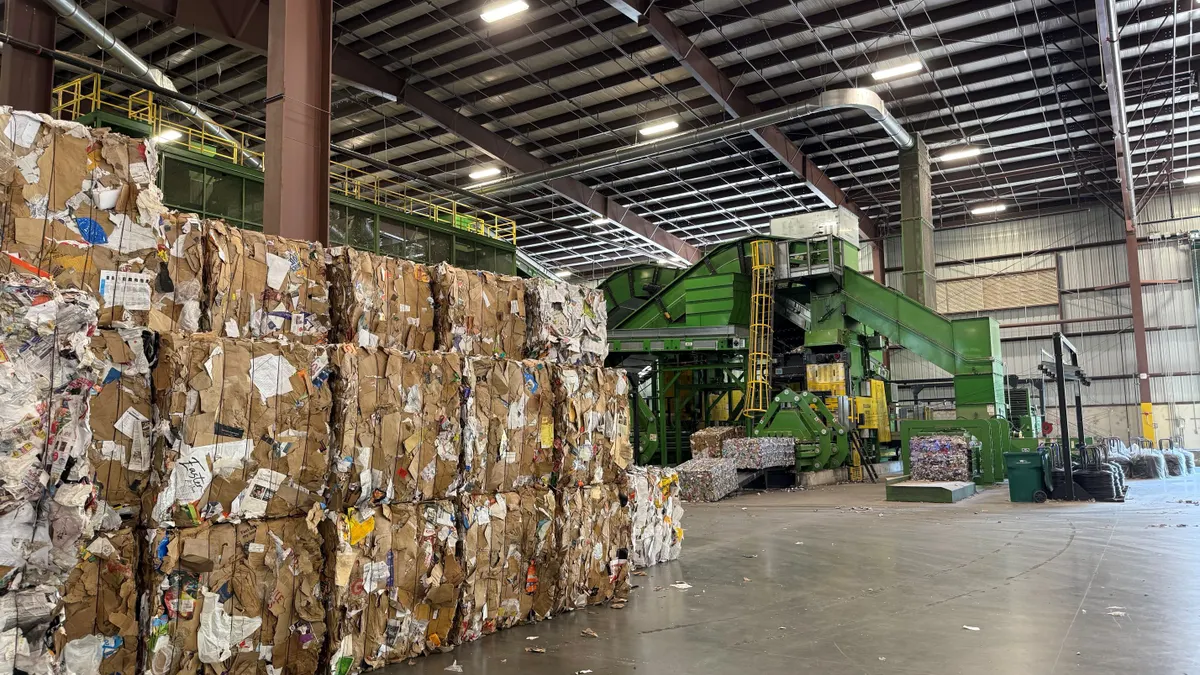Crystal Clean is expanding its PFAS remediation services to take advantage of a business line that’s growing due to tightening state and federal regulations.
The environmental and waste management services company aims to carve out its spot in a competitive market by offering its customizable, mobile service called 4never.
The company, which went private last yearyear, recently touted its work at its facility in Grand Rapids, Michigan, where it stacked four of its mobile units and other treatment technology to remediate up to 300,000 gallons of PFAS-contaminated wastewater a day. Such wastewater comes from landfills and industrial sites, but the company also expects to manage higher volumes of wastewater containing runoff from aqueous film forming foam, a major source of per- and polyfluoroalkyl substances.
Crystal Clean uses foam fractionation as its main method to separate and concentrate PFAS from the water. It’s a technology Crystal Clean’s Darci Ackerman considers the “workhorse” of the company’s PFAS remediation offerings. Crystal Clean then transports the PFAS concentrate to one of its nearby facilities for further management before it is destroyed by a third party off site.
The company’s PFAS strategy comes amid the EPA’s recent move to designated certain PFAS as hazardous substances and set drinking water limits for some of the chemicals. It also comes as waste industry executives adjust to potential regulatory changes — and business opportunties — that could come with the new Trump administration.
Crystal Clean operates a handful of its own water treatment facilities around the country and plans to add its PFAS treatment technology at several of those locations. It’s also working on rolling out more treatment and destruction offerings in the future.
Waste Dive talked with Ackerman, Crystal Clean’s senior vice president who oversees PFAS strategy, about how the company aims to stay competitive in this field while developing new technologies and helping customers comply with regulations.
This conversation was edited for length and clarity.
WASTE DIVE: Waste industry businesses like landfill operators are a notable part of your customer base. What kind of conversations are you having about their needs and concerns around PFAS management, especially as the market for such remediation technologies appears to be growing?
DARCI ACKERMAN: A big conversation is around managing PFAS in leachate. Leachate is probably some of the nastiest materials that you could have. The discussions are really understanding the chemistries and making sure that we're picking the right technologies for them.
There's a lot of people coming out with technology for PFAS for not just concentration, but destruction, and they haven't been fully vetted. So what I'm seeing is landfills spending a lot of time and money on vetting those technologies. A lot of them are doing large-scale trials on site at their landfills, which I think is great because they're trying to solve the problem. The big players are spending money on trying to find the best fit, and we actually are doing a lot of work on that with those landfills as well. We’re also then actively hauling leachate into the Grand Rapids facility for treatment.
For the 4never [service,] we work really closely with the customer, understanding exactly what their chemistries are and the media that's been contaminated, and making the right choices based on that. 4never includes the foam fractionation [process] as well as different options for destruction. The foam fraction that we use concentrates the PFAS so it’s easier to destroy than just processing water, which would be extremely costly.
Every PFAS situation is unique. It's rarely just PFAS and water. There's a lot of co-contaminants that go along with PFAS, so applying just one technology doesn't always solve the problem.
You may need a treatment train, which will look different depending on the customer. Some prefer a carbon media like GAC [granular activated carbon], or you may need other functionalized medias that are specific to capture and sequester PFAS at the back end of a foam frack. If there's small-chain PFAS, you may want to throw a carbon unit or a functionalized media at the end of it, but you don't always need that.
Our foam fractionation has a 99.9% capture, which typically gets you to the limits necessary before discharge to a wastewater treatment plant. But in Grand Rapids, we have carbon on the back ***cut? of the*** end of the unit, just as a final polishing step, just to take care of that last bit of PFAS.
Then, obviously, after we’ve done the concentrating or sequestering steps, the [process] would require ultimate destruction [by a third party.] The method is usually dictated by the generator. We have our own approved list that has facilities that we've vetted and said, yes, this is a good destruction technology.
Many states have already enacted their own PFAS-related laws that are driving some of the remediation market, but the U.S. is also set to have a presidential administration change in January. Does Crystal Clean anticipate changes at the federal level that might play into future business on the PFAS end?
I wish I had a crystal ball that could determine that. But, you know, I believe the horse is out of the gate on PFAS. We're really way down the road with the EPA’s Strategic Roadmap, and I don't see that an administration change is going to turn it around or claw it back. Maybe some decisions get delayed a little bit longer, but ultimately, I think emerging contaminants, not just PFAS, will continue to be addressed.
As far as Crystal Clean’s approach, we're all in. We’re investing not just in equipment and technologies, but also experts in the space so we can provide good solutions that are viable for emerging contaminants like PFAS. So we're really getting out ahead of it with the government and also industrial customers, landfills, wastewater treatment plants, and understanding where they are in the process of making decisions to address their PFAS issues.
The U.S. EPA has said lots more research needs to happen to understand all aspects of PFAS, including treatment, disposal and destruction science. What does Crystal Clean see as the next frontier in this research, and what are some of the unknowns that the industry needs more clarity on?
We do think the foam frack is the best technology right now for concentration, but there needs to be more work done in soil remediation and cleaning up soil projects. Pulling groundwater and treating it is one thing, but for actually treating soils, there isn't really a great solution out there yet. So we are constantly looking at those emerging technologies around that space.
Improvement on short-chain PFAS is another area. We think the EPA will start adding more compounds to their list of PFAS. As they develop those standards, we're going to need to make sure that the technologies are addressing those particular contaminants.
There is no silver bullet, but Crystal Clean is working really hard to find and develop that silver bullet. We're developing a new technology that we're hoping can do both concentration and destruction, but it needs more work before we can really talk about it. At the end of the day, it can't be outrageously expensive to do this, or it's going to be tough. That's the goal, to make it sustainable from all aspects.
Our goal is to try to be a leader in the PFAS and emerging contaminants space. We're focusing on the folks that we think are going to need to address the PFAS issue first, so your municipalities and landfills. That may also force them to go upstream, which would mean regulating the discharges of our industrial customers. Crystal Clean is nationwide, and very tight in with the industrial base of customers.
I feel like we're in an educational place right now, where we’re going to conferences and getting people up to speed, just letting them know what we can offer.



















